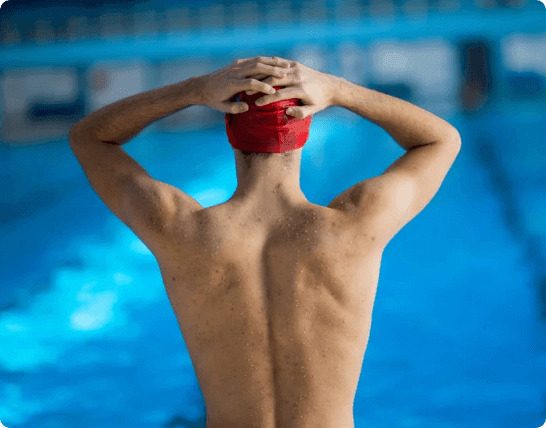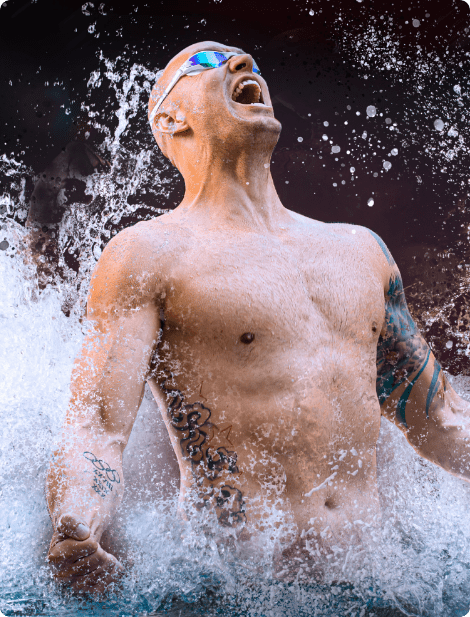
Swimming has always been a beloved summer activity, offering endless hours of fun and providing numerous health benefits. Whether you are a beginner or an experienced swimmer, there’s always room for improvement. In this blog post, we will delve into the world of swimming and unlock the secrets to improving your technique and becoming a more confident swimmer. So, grab your goggles, and let’s dive in!
Essential Gear and Accessories for Swimming
Before we jump into the pool, let’s ensure we have the proper gear and accessories to enhance our swimming experience. A quality swimsuit that fits well and reduces drag in the water is crucial for optimal performance. Additionally, invest in a good pair of goggles to protect your eyes and improve visibility underwater. For those with long hair, a swim cap can keep your hair out of your face and reduce resistance while swimming. It’s important to choose gear that suits your needs and enhances your comfort in the water.
Proper Warm-up Routine
Just like any other physical activity, warming up is an essential part of swimming. It prepares your muscles and joints for the exertion they are about to endure, reducing the risk of injury. Start your warm-up routine with dynamic stretches, such as arm swings, leg swings, and torso twists, to loosen up your muscles. Follow this with a few minutes of light aerobic exercise, like brisk walking or jogging around the pool area. Once your muscles are warmed up, you are ready to swim!
Correct Body Positioning in the Water
Achieving a streamlined body position is crucial for efficient swimming. Improper body alignment can cause excessive drag and hinder your progress in the water. Focus on keeping your head in line with your body, looking down at the bottom of the pool. Ensure your body is aligned horizontally, with your hips and legs in line with your torso. Engage your core muscles to maintain stability and promote efficient movement through the water. Remember, a streamlined body position is the key to achieving maximum speed and efficiency in your strokes.
Image courtesy of www.quora.com via Google Images
Mastering the Basic Swimming Strokes
Now that we have the foundation in place let’s dive deeper into the four basic swimming strokes: freestyle, backstroke, breaststroke, and butterfly. Each stroke has its unique set of techniques and components, and mastering them will help you become a versatile swimmer.
Freestyle: The freestyle stroke, also known as front crawl, is the fastest swimming stroke. Focus on rotating your body from side to side, extending your arm forward, and pulling it back through the water. Coordinate your arm movements with a rhythmic kick to propel yourself forward effortlessly.
Backstroke: In the backstroke, float on your back with your body in a horizontal position. Move your arms in alternating circular motions while keeping them partially submerged. Kick your feet in an up-and-down motion, similar to pedaling a bicycle. Maintaining a straight body position and a relaxed neck and spine is crucial in backstroke.
Breaststroke: The breaststroke is characterized by a coordinated dolphin kick, a simultaneous arm pull, and a glide. Start with your arms extended forward, and pull them back in a sculling motion while kicking your legs simultaneously. Complete a whip-like motion with your legs, bringing them together and thrusting them backward.
Butterfly: The butterfly stroke is known for its beautiful and graceful movements. During this stroke, your arms should recover over the water and then enter simultaneously, while your legs execute a powerful dolphin kick. Focus on maintaining a fluid and synchronized rhythm between your arm and leg movements for an efficient butterfly stroke.
Practice each stroke separately, paying attention to the techniques, before combining them into a smooth, well-coordinated swim.
Breathing Techniques
Breathing is another crucial aspect of swimming that often requires some practice. Efficient breathing not only helps provide oxygen to your muscles but also improves your overall stroke rhythm and reduces fatigue. The breathing technique varies slightly for each stroke.
Image courtesy of www.swimmingsecrets.com via Google Images
In freestyle, take a breath to the side by turning your head to the side during your arm recovery. Exhale underwater and inhale a quick breath as your mouth clears the water. Practice bilateral breathing (alternating sides) to enhance balance and symmetry in your stroke.
In backstroke, breathe naturally as your face is always out of the water. Just ensure that your head is relaxed and aligned with your spine to maintain a smooth and consistent stroke.
The breaststroke and butterfly strokes require timed breathing patterns. Take a breath during the arm recovery in breaststroke, keeping your head aligned with your body. For butterfly, breathe as your arms recover over the water. Timing your breath with your arm movements is crucial for a smooth and efficient stroke.
Remember, practice is key to mastering these breathing techniques. In time, they will become second nature and significantly enhance your swimming experience.
Building Endurance and Increasing Speed
If you want to become a stronger and faster swimmer, building endurance and increasing speed are essential goals. Incorporate interval training into your swimming routine. Swim at a faster pace for a specific distance or duration and then follow it with a recovery period of slower swimming. Gradually increase your training intensity and duration over time to challenge yourself and build stamina. Additionally, incorporate different stroke variations into your workouts to engage different muscle groups and improve overall fitness.
Overcoming Fear of Deep Water and Building Confidence
It’s not uncommon for individuals to feel uneasy or fearful when swimming in deep water. Overcoming this fear and building confidence is crucial for enjoying the vast potential of swimming. Start by practicing in a shallow pool or with a flotation device until you feel sufficiently comfortable. Consider taking swimming lessons to improve your technique and gain confidence under the guidance of an instructor. Remember, with patience and persistence, you can conquer your fears and become a more confident swimmer.

Safety Tips for Swimming
While swimming is a fun and rewarding activity, it’s important to prioritize safety. Here are a few safety tips to keep in mind:
Swim in designated areas where there are lifeguards present, ensuring maximum safety and supervision. Be aware of water currents, especially in natural bodies of water, and avoid swimming alone whenever possible. It’s also vital to know basic water rescue techniques and CPR, allowing you to assist others in case of an emergency. Always prioritize your safety and that of others while enjoying the water.
In Conclusion
Swimming is not only a refreshing and enjoyable activity but also a great way to stay fit and healthy. By following these tips and techniques, you can enhance your swimming skills, improve your technique, and become a more confident swimmer. Embrace the challenge, set goals, and enjoy the process of becoming an Olympic-level swimmer. Remember, the water is waiting, so dive in and unlock your swimming potential!




